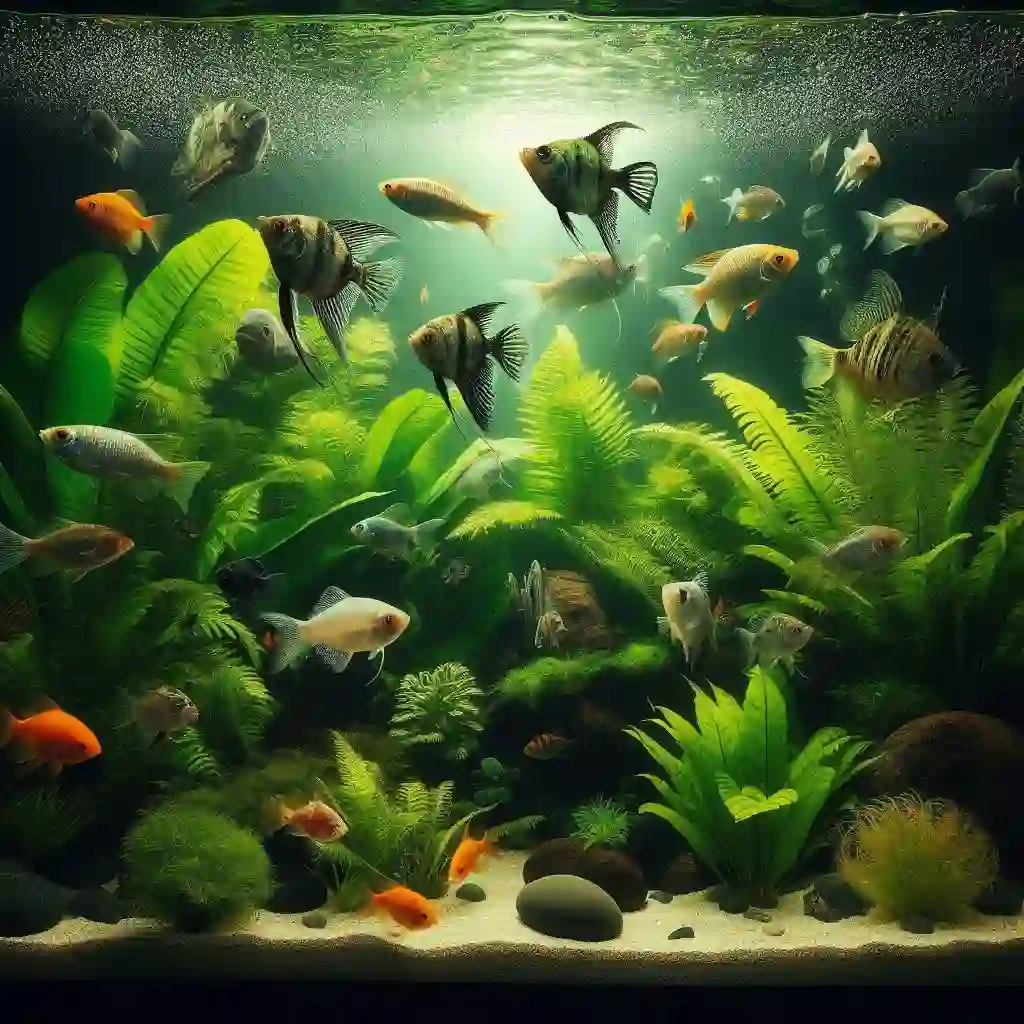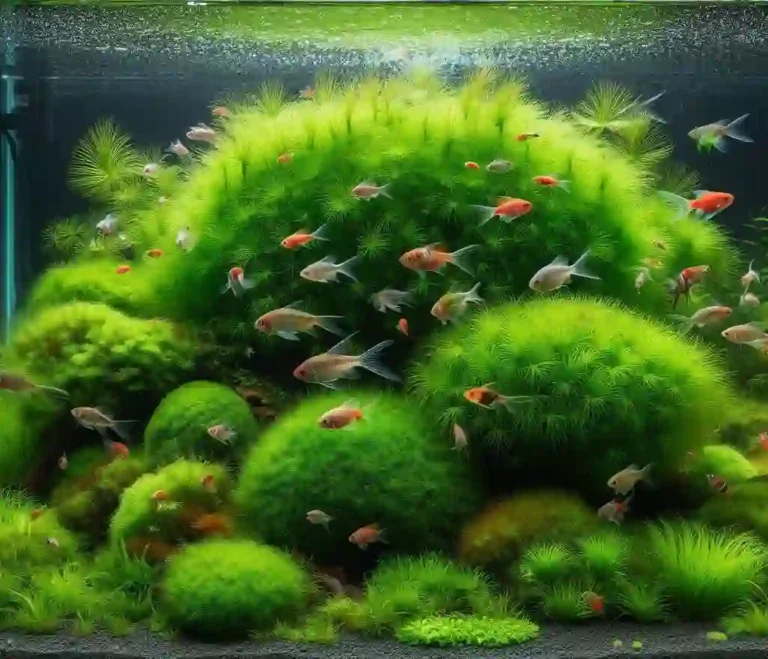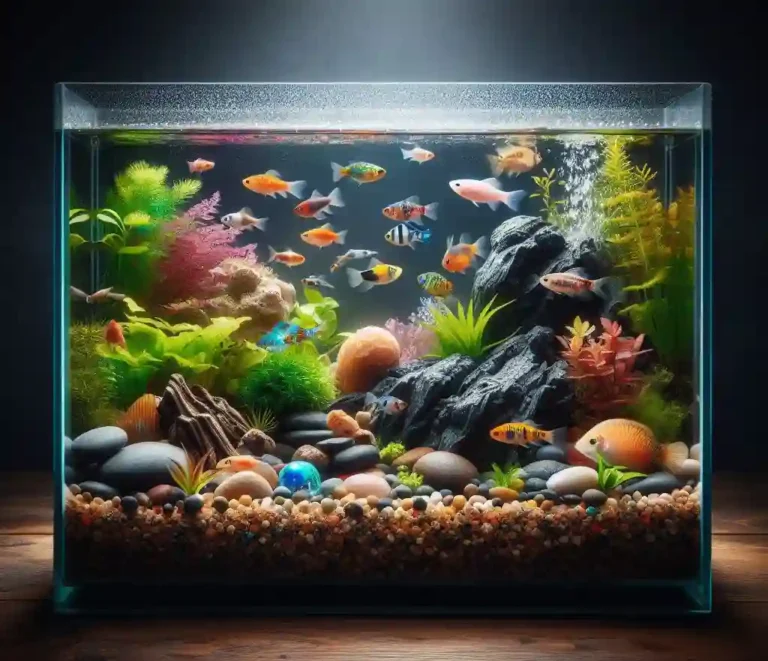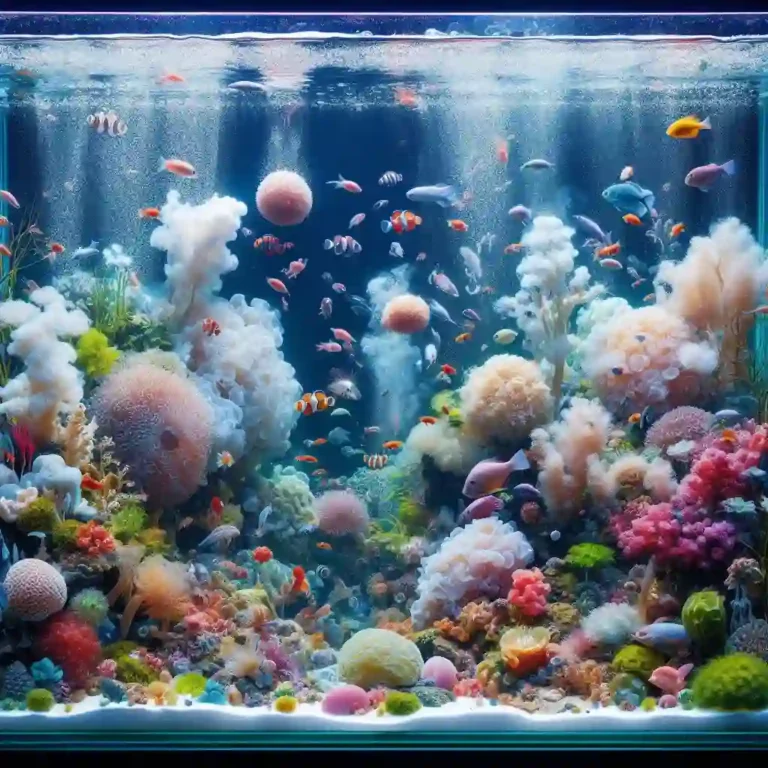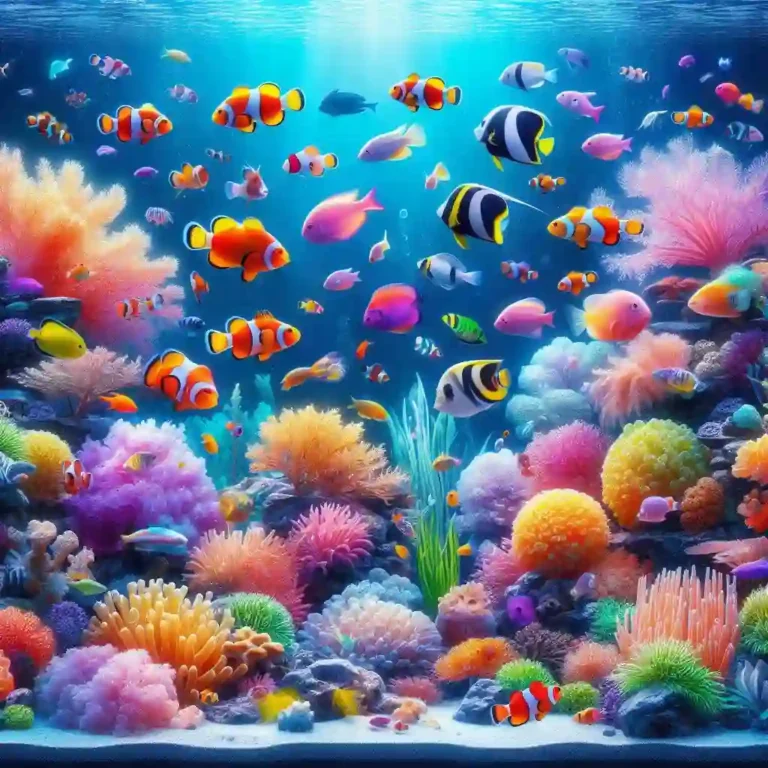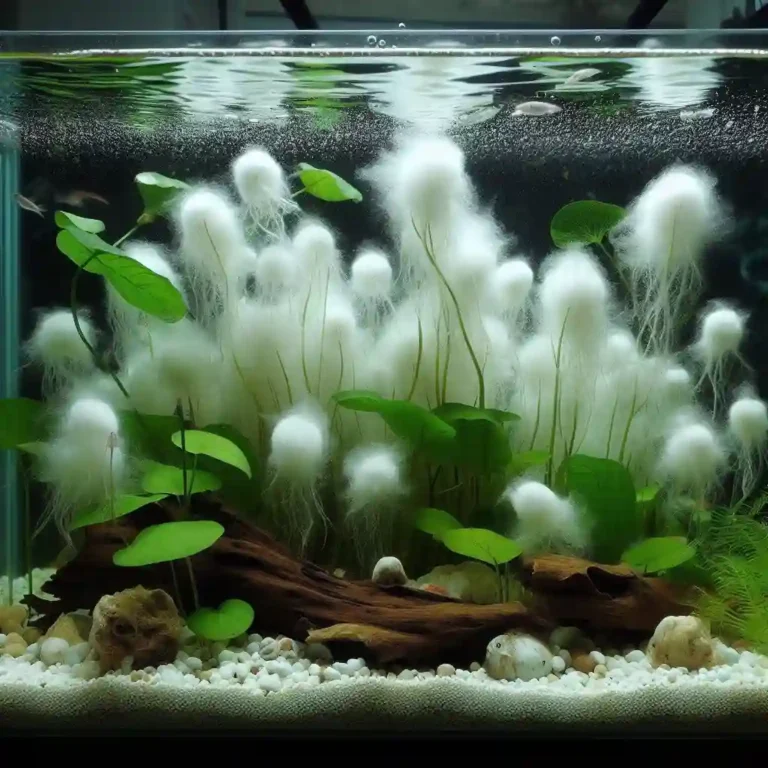How Many Fish Can Fit in a 20-Gallon Tank? The Ultimate Guide
How Many Fish Can Fit in a 20-Gallon Tank? Are you excited to set up your first aquarium, but unsure how many fish you can safely keep in your 20-gallon tank?
With so many beautiful and fascinating fish species to choose from, it can be tempting to overstock your tank. However, overcrowding can lead to water quality issues, stress, and disease among your fish.
In this guide, we’ll explore the importance of proper stocking, discuss the general rules of thumb for stocking a 20-gallon tank, and provide some example stocking scenarios to get you started.
How Many Fish Can Fit in a 20-Gallon Tank? – A Quick Guide
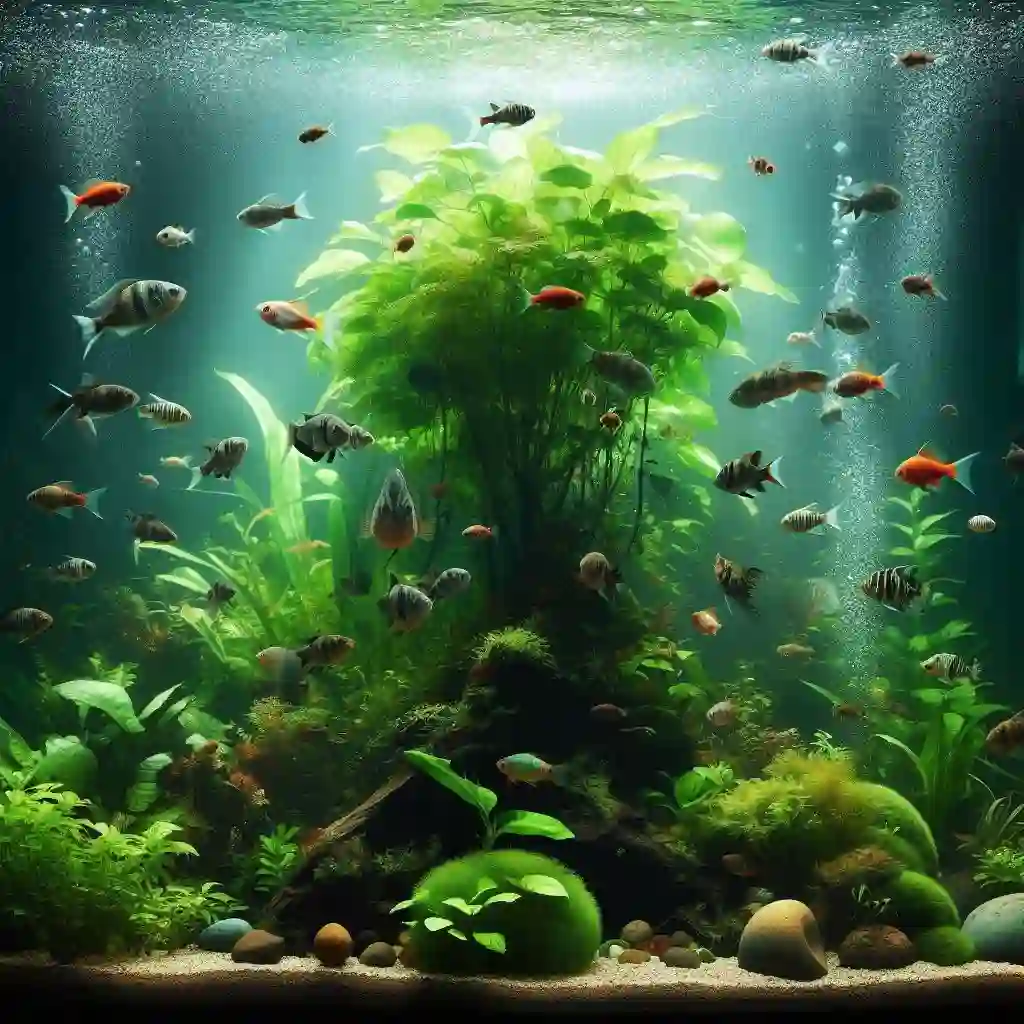
General Rule of Thumb:
- 1-2 inches of fish per gallon of water
- 1-2 pounds of fish per 10 gallons of water
Stocking Scenarios:
- Community Tank: 6-8 small schooling fish (e.g. neon tetras, white cloud mountain minnows) + 2-3 small bottom-dwellers (e.g. corydoras catfish)
- Small Schooling Fish: 10-12 small schooling fish (e.g. lemon tetras, zebra danios)
- Species-Specific Tank: 6-8 discus or 6-8 small angelfish
Remember:
- Research the specific needs and requirements of each species
- Consider the adult size, swimming level, and social requirements of each species
- Start with a small number of fish and gradually add more as the tank matures
- Regularly test water parameters and perform water changes to maintain optimal water quality
Understanding the One-Inch-per-Gallon Rule
The one-inch-per-gallon rule is a classic guideline for stocking aquariums, suggesting that for every gallon of water, you can safely keep one inch of fish. This rule is often cited as a rough estimate for determining the maximum number of fish that can be kept in a tank.
For a 20-gallon tank, this would translate to 20 inches of fish. However, this rule has its limitations and doesn’t take into account important factors such as fish size, shape, and swimming level.
Additionally, it doesn’t consider the biological load of the fish, which can impact water quality. While the one-inch-per-gallon rule can serve as a rough starting point, it’s essential to consider other factors to ensure a thriving and balanced aquarium.
Calculating Fish Load: A More Accurate Approach

While the one-inch-per-gallon rule provides a rough estimate, a more accurate approach to calculating fish load involves considering the biological load of the fish. This can be achieved by calculating the total biomass of the fish in the tank.
Biomass refers to the total weight of the fish, which directly impacts the amount of waste produced and the subsequent biological load on the tank. A general rule of thumb is to aim for a total biomass of 1-2 pounds of fish per 10 gallons of water. For a 20-gallon tank, this would translate to 2-4 pounds of fish.
To calculate the biomass, you can research the average adult weight of the fish species you’re interested in keeping and adjust accordingly. This approach provides a more nuanced understanding of fish load and helps ensure a balanced and healthy aquarium.
The Importance of Fish Size and Shape
When considering fish for your 20-gallon tank, it’s essential to think beyond just the number of fish and consider their size and shape. Larger fish, such as cichlids or angelfish, can occupy a significant amount of space in the tank, even if they’re not particularly long.
On the other hand, smaller fish like neon tetras or white cloud mountain minnows can be stocked in small schools without overwhelming the tank. Fish shape is also crucial, as long, slender fish like zebra danios or cherry barbs can be stocked in greater numbers than shorter, more compact fish like guppies or platies.
Additionally, fish with long fins, such as angelfish or discus, require more space than fish with shorter fins. By considering the size and shape of the fish, you can create a harmonious and balanced community in your 20-gallon tank.
Stocking for Community or Species-Specific Tanks

When stocking your 20-gallon tank, you’ll need to decide whether to create a:
Community Tank:
- Mix of multiple species that thrive in similar water conditions
- Examples:
- Schooling fish like neon tetras, harlequin rasboras, and lemon tetras
- Peaceful bottom-dwellers like corydoras catfish
Species-Specific Tank:
- Dedicated to a single species
- Focus on the unique needs and characteristics of the species
- Examples:
- School of discus
- Group of African cichlids
- Research the specific social and spatial requirements of the species to ensure a thriving and harmonious environment.
The Role of Filtration and Water Quality
Filtration:
- Removes waste products, excess food, and decaying organic matter from the water
- Prevents the buildup of toxins and maintains a stable environment
- Helps to establish a strong colony of beneficial bacteria
- Essential for breaking down waste and maintaining water quality
Water Quality:
- Regular water changes are crucial for maintaining a healthy environment
- Monitor water parameters such as:
- Ammonia
- Nitrite
- Nitrate levels
- Prioritize filtration and water quality to create a thriving and balanced ecosystem in your 20-gallon tank
Avoiding Overcrowding: The Risks and Consequences
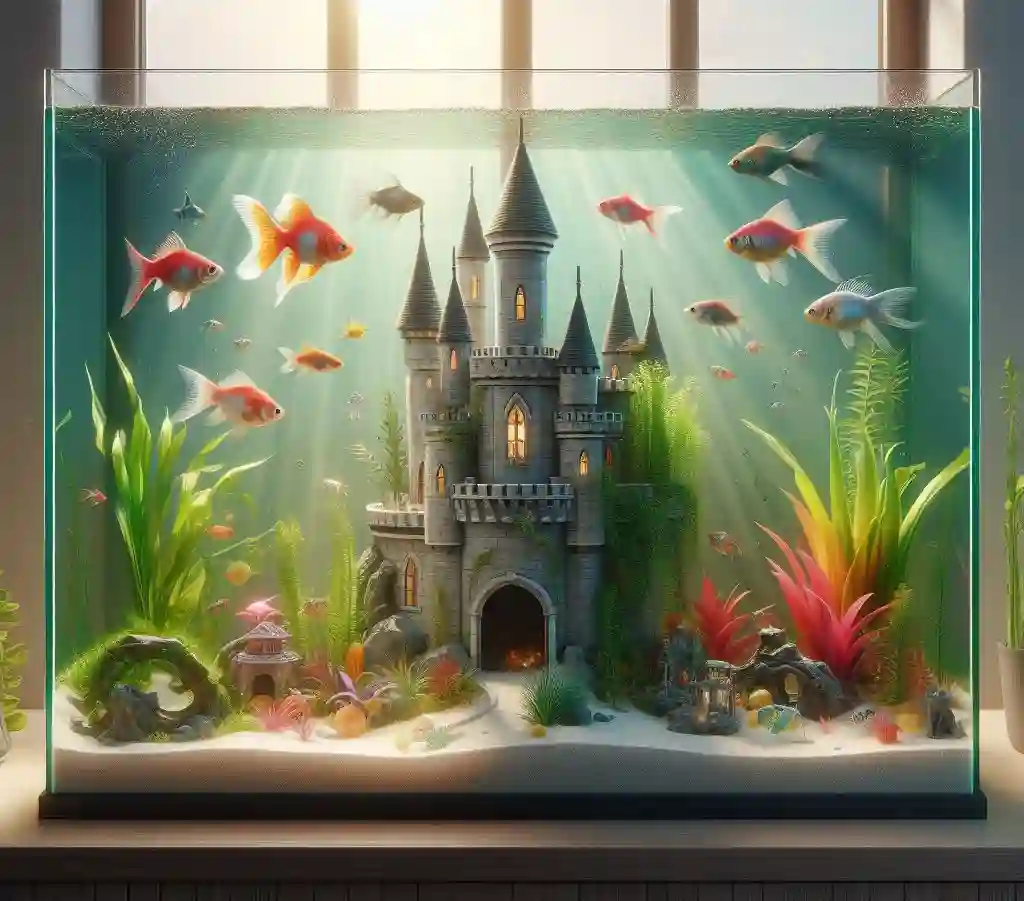
Overcrowding is a common mistake that can have devastating consequences for your fish and the overall health of your 20-gallon tank. When too many fish are crammed into a small space, it can lead to:
Risks:
- Increased aggression and stress among fish
- Decreased water quality due to excessive waste production
- Higher risk of disease outbreaks and parasites
- Reduced oxygen levels and increased carbon dioxide levels
- Increased risk of fish death and tank crashes
Consequences:
- Fish may become stunted or deformed due to inadequate space and resources
- Water quality may deteriorate rapidly, leading to toxic buildup and fish illness
- The tank may become a breeding ground for disease and parasites, putting all fish at risk
- The entire ecosystem may collapse, requiring a complete tank restart
By avoiding overcrowding and providing a spacious and well-maintained environment, you can ensure the health, happiness, and well-being of your fish.
Example Stocking Scenarios for a 20-Gallon Tank
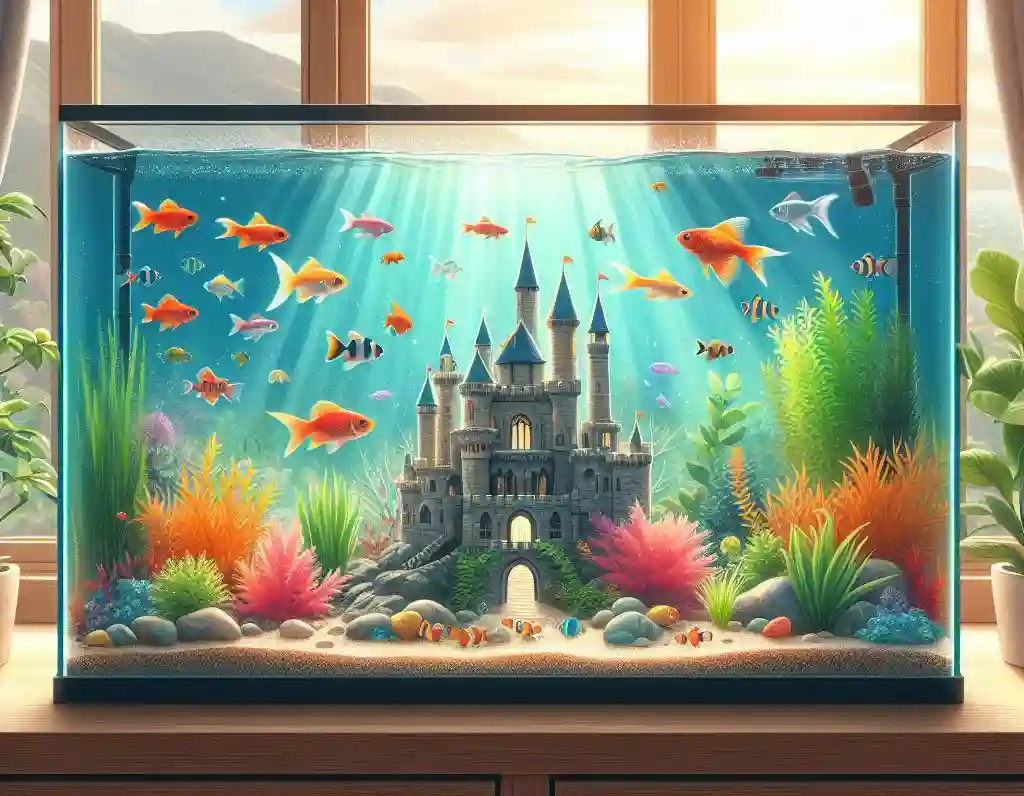
Scenario 1: Community Tank
- 6-8 Neon Tetras
- 6-8 Harlequin Rasboras
- 2-3 Corydoras Catfish
- 1-2 Small Plecos (e.g. Bristlenose or Rubber Lip)
Scenario 2: Small Schooling Fish
- 10-12 Lemon Tetras
- 6-8 White Cloud Mountain Minnows
- 2-3 Small Plecos (e.g. Bristlenose or Rubber Lip)
Scenario 3: Species-Specific Tank
- 6-8 Discus
- 1-2 Small Plecos (e.g. Bristlenose or Rubber Lip)
Scenario 4: Peaceful Community
- 6-8 Zebra Danios
- 6-8 Cherry Barbs
- 2-3 Corydoras Catfish
- 1-2 Small Plecos (e.g. Bristlenose or Rubber Lip)
Conclusion: Finding the Perfect Balance for Your 20-Gallon Tank
- Research, research, research: Learn about the specific needs and requirements of each fish species you’re interested in keeping.
- Start small: Introduce fish slowly and in small groups to prevent stress and territorial behavior.
- Monitor water quality: Regularly test water parameters and make adjustments as needed to maintain optimal water quality.
- Maintain a clean tank: Perform regular water changes and clean the tank regularly to prevent the buildup of toxins and debris.
- Be patient: Finding the perfect balance takes time and patience, so be prepared to make adjustments and learn from your experiences.
FAQs
Q: How many fish can I put in a 20-gallon tank?
A: The number of fish you can put in a 20-gallon tank depends on the size and type of fish, as well as the tank’s filtration and water quality. A general rule of thumb is to stock 1-2 inches of fish per gallon, but this can vary depending on the specific needs of the fish.
Q: What is the best way to determine how many fish to put in my tank?
A: The best way to determine how many fish to put in your tank is to research the specific needs and requirements of each species you’re interested in keeping. Consider factors such as adult size, swimming level, and social requirements.
Q: Can I overstock my tank?
A: Yes, overstocking your tank can lead to water quality issues, stress, and disease among your fish. It’s better to start with a small number of fish and gradually add more as the tank matures and the biological load increases.
Q: How often should I perform water changes?
A: Regular water changes are crucial for maintaining optimal water quality. Aim to change 10-20% of the tank water weekly, depending on the tank’s bioload and water parameters.
Q: What is the importance of filtration in a 20-gallon tank?
A: Filtration is crucial for maintaining optimal water quality and removing waste products from the tank. A good filtration system can help prevent water quality issues and keep your fish healthy.
Q: Can I mix different species of fish in my 20-gallon tank?
A: Yes, but it’s essential to research the compatibility of different species before mixing them in the same tank. Some species may not get along or may have different water requirements, so it’s crucial to choose species that are compatible.

Hello, I’m Aria Cooper, the heart and soul behind Swimmy Buddies. As a devoted fish aficionado, I share my aquatic adventures and expertise to inspire your own underwater explorations. 🐠🌊

